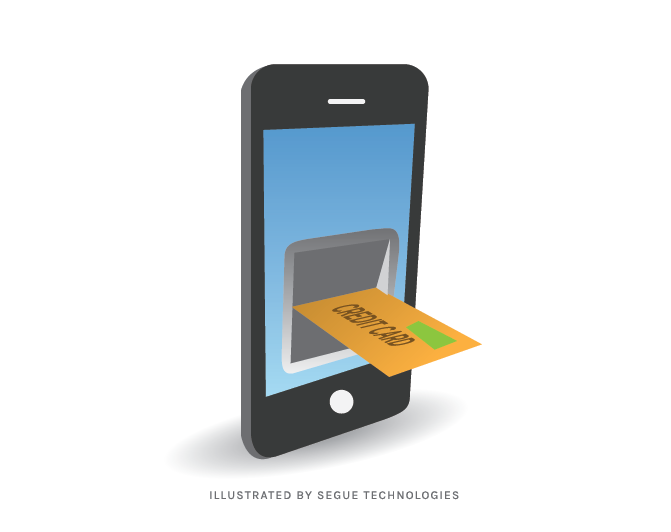When setting up or talking about designing a new website with eCommerce needs, choosing a method of online payment is usually an important topic to cover early on in the project. With the vast array of options out there, it’s not always the easiest decision to make. When choosing the online payment method for your website, options you should consider include using your current credit card merchant, signing up for PayPal, or incorporating methods that use mobile devices.
Using Your Current Merchant
Are you an established business (i.e. a physical business) that has been in operation for a substantial amount of time? If so, then chances are you already have a merchant account to handle credit card transactions. It is definitely worth looking at the tools your merchant account provider has to offer for accepting payments online and through the web. They may have options for you to link to their systems and handle your payments, invoices and credit card processing. Since you are already an established customer, this may ultimately be the cheapest option for your business. It will also provide integrated reporting on your receipts. Each credit card merchant will provide their own interface into their processing services. These are too unique to address here and may require some development to integrate into your specific eCommerce site, but it is worth considering for some clients.

Using PayPal
PayPal has evolved over the past few years, but it is probably best known as the payment arm of Ebay.com. Using PayPal, you can create a payment account using your bank account, a credit card or debit card. Once a user logs into PayPal.com with their vendor account, they are presented with various tabs. As a business or merchant account, there is a tab for creating buttons and links to post on your website. There are also options for creating invoices and recurring billing, which fit various business needs, depending on the products and services sold. For non-profit organizations, PayPal offers “donate” and “contribute” buttons as well. Most of these items allow you to customize the text on the buttons and the explanatory information displayed with the buttons and links.
PayPal has various options for upgrading your account to a merchant account with different levels of service options. Like most payment services, a fee will be charged for each sale transaction that is processed, but there is also the option to pay a monthly fee and pay lower per-transaction fees on each charge. Another option is to sign up for an account that only charges you per-transaction fees, with no monthly minimum requirements for total sales or monthly fees. PayPal fees are generally lower than regular merchant processing companies and offer a lower cost of entry for companies just getting started and not sure what their sales may be.
Chances are you already have a PayPal account and are familiar with how it works. If you have a business or merchant account with PayPal, then you are halfway home. If not, setting up a vendor account for a for-profit business is straightforward and generally takes a couple of days. PayPal requires certain business documentation, like letters of incorporation or a business license to verify ownership, legality of the business, etc. For non-profits, additional information will be required, such as proof of exempt status.
Exploring Additional Options
There are additional options from new players that have entered the online payment arena in the last few years. These include services such as Dwolla.com or Square.com. These payment processing companies have entered the market to enable payment through mobile devices. They offer the ability to take debit and credit card payments from patrons in person by simply swiping or scanning the customer’s credit card. To keep up with their competition, PayPal.com has added this capability through their card processing attachment for mobile phones, available at local office supply companies such as Staples. Square.com allows business owners to take credit cards, debit cards and cash payments from a customer’s “Square Wallet” using the business owner’s Android, iPhone or iPad. With the iPad, the owner can setup a cash register for their business and eliminate the need to obtain a traditional merchant business accounts with their bank or credit union, a requirement that can be difficult to obtain, especially for new businesses. Dwolla.com provides tools for integrating payments from mobile devices or web applications. The most interesting thing about these new services is that they are changing the model of how the fees are structured. Square.com, for example, is offering a flat fee-per-month and no per-transaction fees. If a business has a large number of transactions per month, the flat-fee option may be a huge cost saver.
There are many options for adding payment acceptance options to a web site. Most offer options that make incorporating buttons, links, invoices and billing into the website easy. Available options are likely to grow as more players enter the arena and offer varied services. The key is to find the service that provides the right mix of tools that you require at prices that are affordable for how your business works.